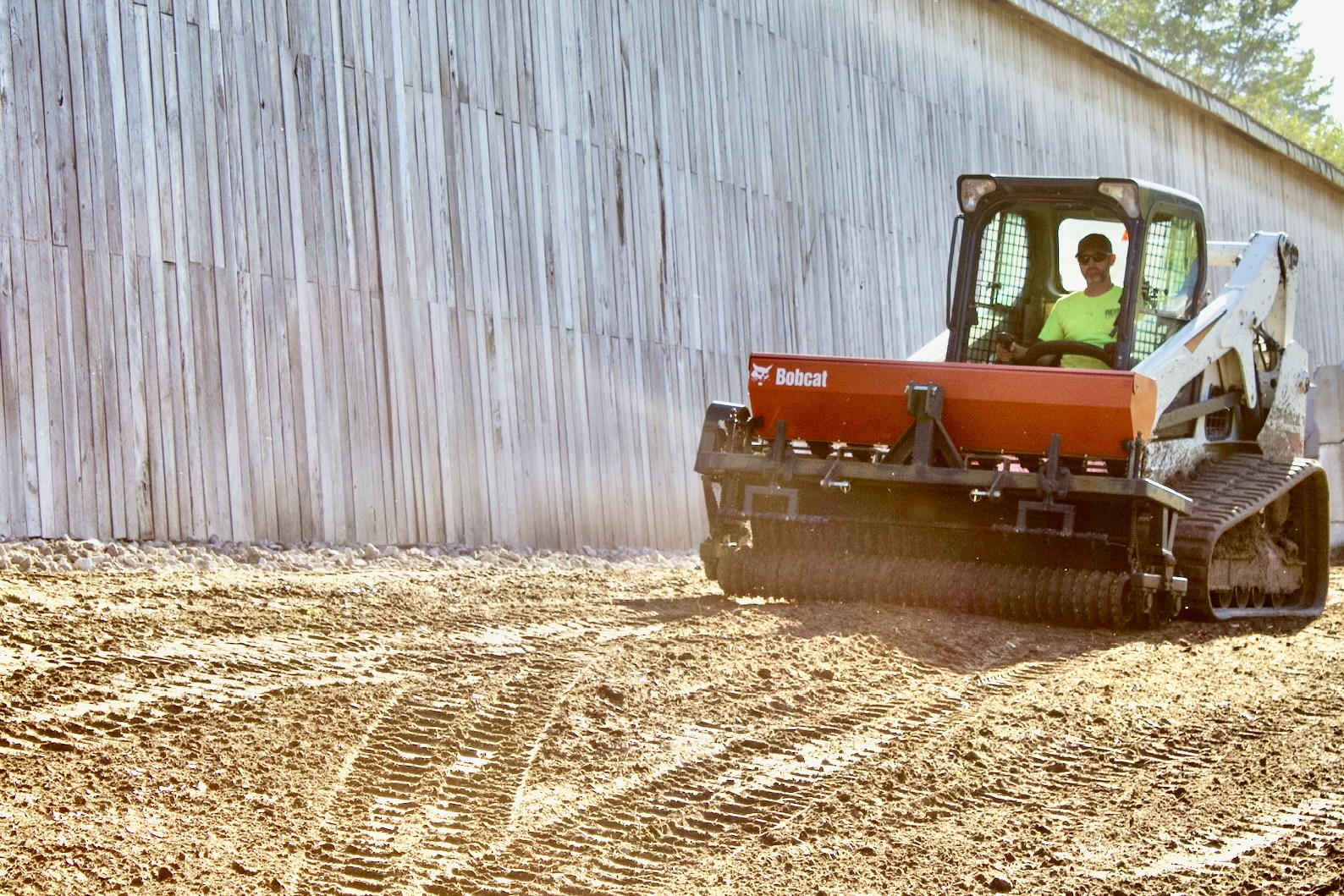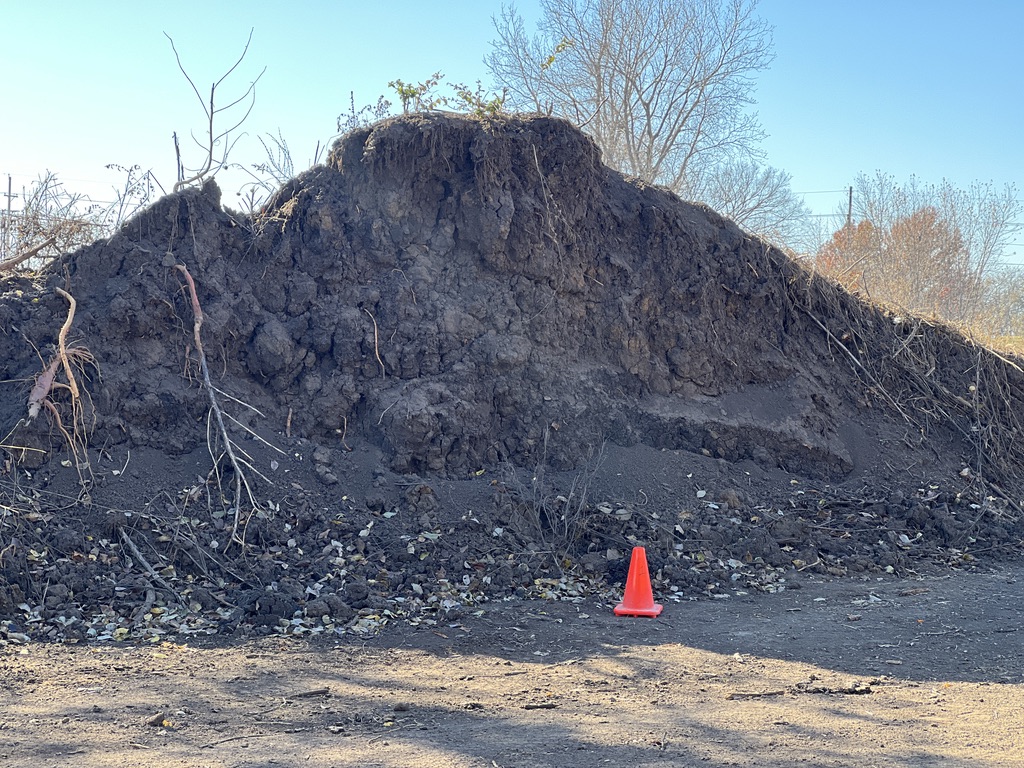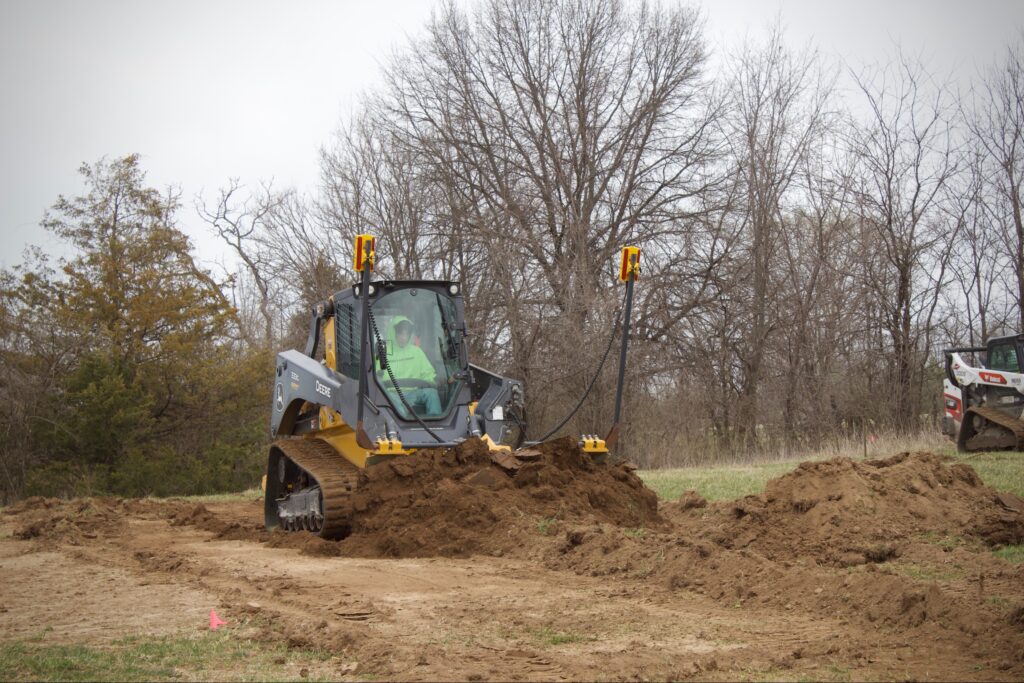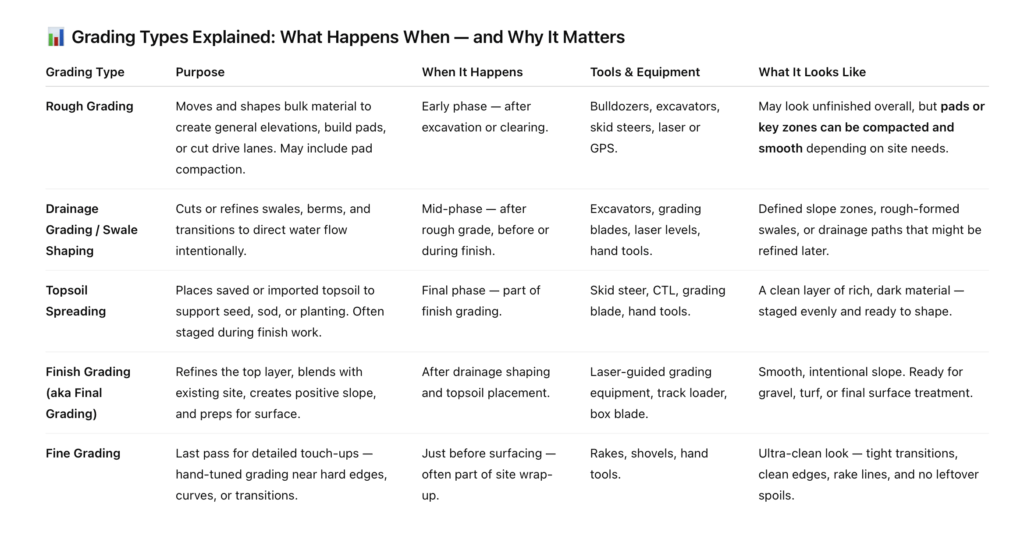
After construction wraps — whether it’s a new structure, addition, parking lot, or outbuilding — the heavy equipment rolls out and the site looks done. But there’s still an important process left: Getting the water to drain right, creating a smooth, erosion-resistant surface, and establishing the slope that supports long-term use.
At Reiss Earthworks, we specialize in laser-guided finish grading for commercial properties, large residential lots, athletic surfaces, and industrial sites. Whether it’s a brand-new project or land that’s been fighting water for years, we shape the final grade to support what you’ve built.
What Is Finish Grading?
Finish grading refines the top layer of soil and ties in new work with the existing site. That means dialing in the slope, matching elevations, and creating smooth transitions between structures, surfaces, and open areas.
It sets the stage for:
◾Final use such as turf, hard surfaces, or landscaping
◾Proper water flow
◾General usability and upkeep
We use laser technology to shape precise, positive slopes — and ensure the site drains the way that it should.
Where It Fits In
We’re often called after:
◾New construction (residential or commercial)
◾Additions or garages
◾Parking lot or driveway installation
◾Swales, drainage corrections, or utility work
◾Or anytime the site looks fine… but doesn’t act like it
Pro Tip: Smartly Stage Early to Save Later
Finish grading gets a lot easier — and better — when the site is managed with intention during earlier phases of construction.
Save Your Topsoil
If your site has decent native topsoil, try to separate and stockpile it instead of letting it get buried under clay or hauled off with general spoils. When it’s time to finish grade — that topsoil becomes valuable material for shaping, seeding, or future landscaping — and it’s already paid for!
Benefits:
◾Creates a better base for sod or seed
◾Reduces the need to import material later
◾Leads to cleaner, smoother grading passes
Keep Rock Contained
Aggregate for flatwork, trench backfill, footings, and more is essential — but if it’s spread around the site, it can cause headaches during final grading.
We suggest keeping rock staged in one or two defined areas and spreading it with intention when the time is right.
Why it matters:
◾Prevents rock from contaminating topsoil or turf zones.
◾Makes cleanup faster and more affordable.
◾Keeps your final surface looking clean, not grass speckled with crushed rock.
These small moves make a big difference when it’s time to close out the job and hand off a site that’s truly ready for use.

Import, Export, and What Your Site Might Need
Every site is different. Sometimes we’re working with a clean canvas. Other times, there’s too much material in the way — or not enough to shape a proper finish.
We’ll assess whether your project needs:
◾Spoil export — hauling off excess material like clay, debris, or overburden.
◾Topsoil import — bringing in clean, nutrient-rich soil for a smooth final layer that supports seed, sod, or planting.
◾Fill material — for raising low areas or correcting grade before shaping the surface.
This isn’t one-size-fits-all — We look at drainage, compaction, transitions, and how the site is meant to function and we grade accordingly.
If material needs to come in or go out, we’ll let you know early so there are no surprises when it’s time to wrap up.
Why It Gets Missed
Finish grading is easy to skip or overlook. Sometimes it’s left off the punch list. Other times, it’s assumed someone else will handle it — the landscaper, the concrete crew, or the owner.
Not every crew is set up for this kind of precision work though. Landscapers often focus on softscapes. Dirt crews usually move on after the bulk grading. No one values it until they skip it. That’s where we come in — bridging the gap with laser-guided finish grading that ties it all together.
What’s Included in Our Finish Grading (Starting at $4,000)
Most of our finish grading projects start at $4,000 — and here’s what that covers:
◾Laser-verified slope and drainage setup.
◾Multi-layer, including compaction when needed, and smoothing the visible surface.
◾Seamless transitions between pads, drives, buildings, and lawns.
◾Grading for sod, seed, gravel, or future site plans.
◾Drainage-conscious work that solves problems you can’t always see.
The finish grade is not optional. It’s what makes your investment last and your site finally feel finished.

Why Vegetating Bare Soil Matters
Once your final grade is in place, leaving bare soil exposed is never the end goal. Without some kind of cover — whether it’s sod, seed, mulch, or gravel — the surface becomes vulnerable to erosion and rutting… which quickly turns into damage, rework, and wasted money and effort.
At Reiss Earthworks, we finish the surface with intention so it’s ready to support whatever’s next. That might mean:
◾Multi-layer, including compaction when needed and smoothing the visible surface.
◾Hydro-seed or other methods of grass seeding as well as straw matting for erosion control and stabilization.
◾Sod for immediate coverage.
◾Gravel or crushed rock for drive areas.
◾Rip rap, or other soil preservation products, including native planting zones for slope retention.
Vegetation helps:
◾Lock in the surface so it doesn’t wash away during the next storm.
◾Keep sediment out of storm drains, ditches, and swales.
◾Preserve the grading work you just paid for.
Because if you don’t seed it — nature will do her job, and the erosion she’ll leave you with won’t be what you wanted.
Let’s Get the Grade Right
If your site is new, in progress, or just never quite worked the way it should — let’s take a look. Learn more about our process on our grading page.

We serve Lee’s Summit, the Kansas City metro, and rural or commercial sites across Missouri, Kansas, and the Midwest.
📞 Reach out to Reiss Earthworks to schedule a walk-through or request a quote.
Posted: